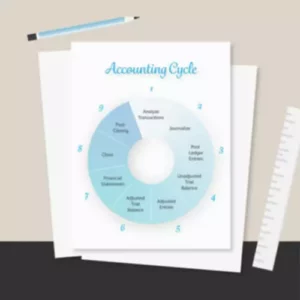Content
- .css-g8fzscpadding:0;margin:0;font-weight:700;Understanding mark to market
- Mark to Market in Financial Services
- Applying the Lessons of Enron’s Mark-to-Market Accounting Scandal Today
- Investors
- Topic No. 429, Traders in Securities (Information for Form 1040 or 1040-SR Filers)
- Mark to Market – Explained
- Where have you heard about mark to market accounting?

It must be based on an estimate of the number of customers likely to accept a discount. In marking-to-market a derivatives account, at pre-determined periodic intervals, each counterparty exchanges the change in the market value of their account in cash. For Over-The-Counter (OTC) derivatives, when one counterparty defaults, the sequence of events that follows is governed by an ISDA contract. When using models to compute the ongoing exposure, FAS 157 requires that the entity consider the default risk (“nonperformance risk”) of the counterparty and make a necessary adjustment to its computations. If at the end of the day, the futures contract entered into goes down in value, the long margin account will be decreased and the short margin account increased to reflect the change in the value of the derivative.
Is mark to market accounting allowed?
Suffice it to say, though mark-to-market accounting is an approved and legal method of accounting, it was one of the means that Enron used to hide its losses and appear in good financial health.
Marking to model lets banks paint a relatively optimistic picture of their financial condition. As an economy is crashing, businesses will have to mark down their assets and investments, leading to a snowball effect and additional bankruptcies. As a result, many businesses can go bankrupt, setting off a downward spiral that makes a recession worse. When oil prices dropped in 1986, the property held by Texas savings and loans also fell. That made it seem the banks were in better financial shape than they were. Given that the farmer holds a short position in the rice futures, when there is a fall in the value of the contract, an increase to the account is witnessed.
.css-g8fzscpadding:0;margin:0;font-weight:700;Understanding mark to market
IAS also requires the use of mark-to-market accounting in certain circumstances. Under IAS 39, financial instruments that are held for trading, such as stocks, bonds, and derivatives, are required to be valued at their fair value, with changes in fair value recorded in the income statement. Under IFRS, mark-to-market accounting is required for financial instruments that are traded in active markets. This includes assets such as stocks, bonds, and derivatives that have readily available market prices. These financial instruments must be valued at their fair value, which is the price that would be received to sell an asset or paid to transfer a liability in an orderly transaction between market participants at the measurement date.
Companies in the financial services industry may need to make adjustments to their asset accounts in the event that some borrowers default on their loans during the year. When these loans have been identified as bad debt, the lending company will need to mark down its assets to fair value through the use of a contra asset account such as the “allowance for bad debts.” Mark to market is an accounting practice that involves adjusting the value of an asset to reflect its value as determined by current market conditions. The market value is determined based on what a company would get for the asset if it was sold at that point in time. Traders report their business expenses on Schedule C (Form 1040), Profit or Loss From Business (Sole Proprietorship). Gains and losses from selling securities from being a trader aren’t subject to self-employment tax.
Mark to Market in Financial Services
Mark-to-market accounting is a special way to record assets on a balance sheet. Proper adjustment shall be made in the amount of any gain or loss subsequently realized for gain or loss taken into account under the preceding sentence. The Secretary may provide by regulations for the application of this subparagraph at times other than the times https://www.bookstime.com/ provided in this subparagraph. There are two parties on either side of a futures contract – a long trader and a short trader. The long position trader will be confident, while the short position trader will be cautious. Cash received ($2.7 million) by the company represents the majority of sales recorded in the income statement this period.
It is done by recording the prices and trades in an account or portfolio. Other major industries such as retailers and manufacturers have most of their value in long-term assets, known as property, plant, and equipment (PPE), as well as assets like inventory and accounts receivable. All of these are recorded at historic cost and then impaired as circumstances indicate. Correcting for a loss of value for these assets is called impairment rather than marking to market. In securities trading, mark to market involves recording the price or value of a security, portfolio, or account to reflect the current market value rather than book value.
Applying the Lessons of Enron’s Mark-to-Market Accounting Scandal Today
A loan may have prespecified rate resets in response to changes in the issuer’s credit quality. If the banks were forced to mark their value down, it would have triggered the default clauses of their derivatives contracts. The contracts required coverage from credit default swaps insurance when the MBS value reached a certain level.
Typical assets that stay at cost are long term assets like investments or securities; typical assets that are depreciated include tangible long term assets like property, plant and equipment. They then stay at that cost indefinitely, or see their values reduced from depreciation. Section 1014(c) of such Code shall not apply to so much of such position’s or property’s value (as included in the decedent’s https://www.bookstime.com/articles/mark-to-market-accounting estate for purposes of chapter 11 of such Code) as exceeds its fair market value as of the date such transaction is closed. Such transaction and position shall not be taken into account in determining whether any other constructive sale after June 8, 1997, has occurred. The preceding sentence shall cease to apply as of the date such transaction is closed or the taxpayer ceases to hold such position.
Investors
The impact of the IASB proposal on quarterly earnings will be the key factor in whether the EU decides to adopt it. The question is, Will financial assets now classified as available for sale be moved to the trading category or the held-to-maturity category? The proposal will face tough sledding if changes in the fair value of assets have a larger impact on the income statements of banks than they do under current IASB rules. But it’s not true that historical cost accounting can disregard permanent changes in current market value or that most assets of financial institutions are marked to market.
































